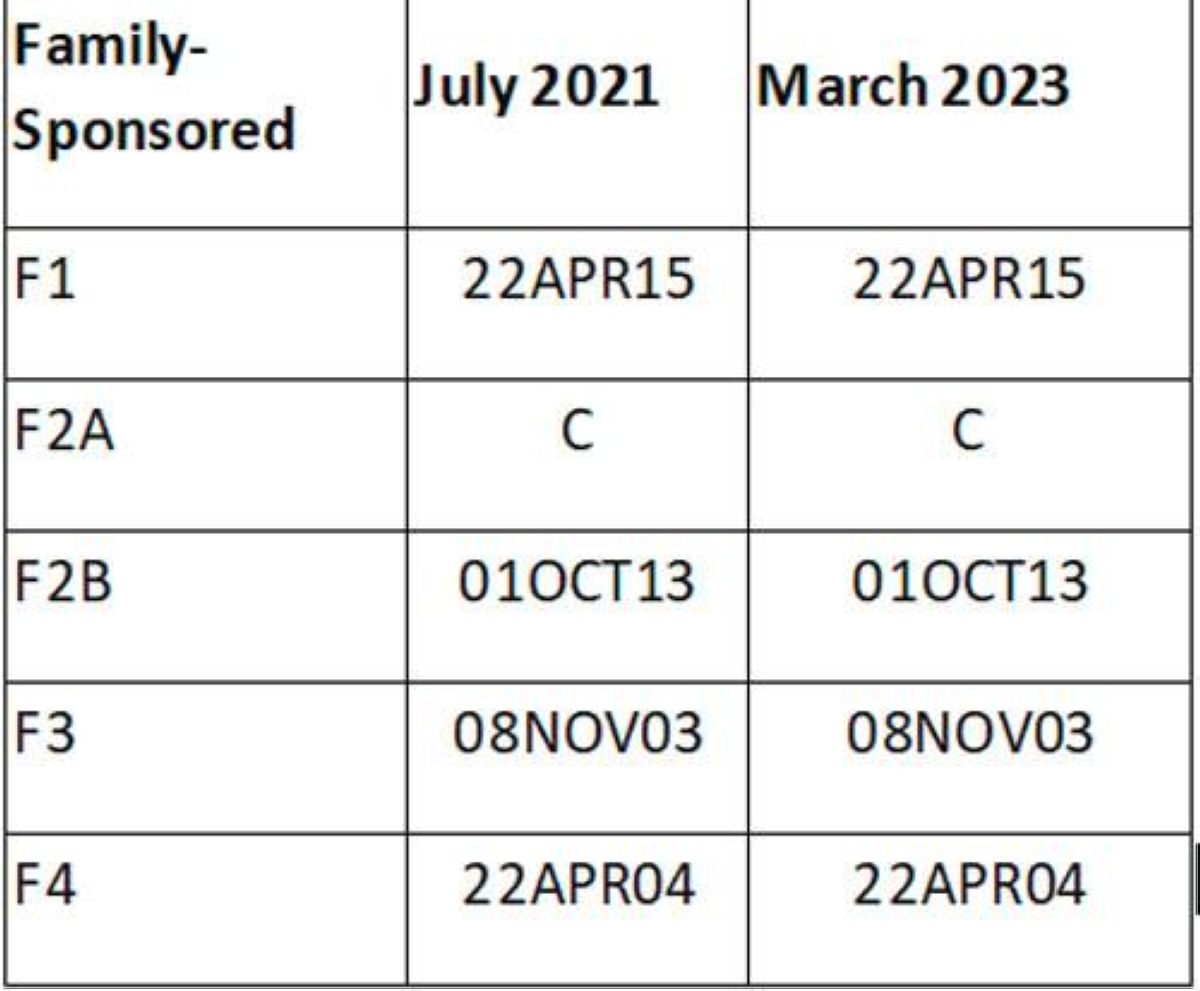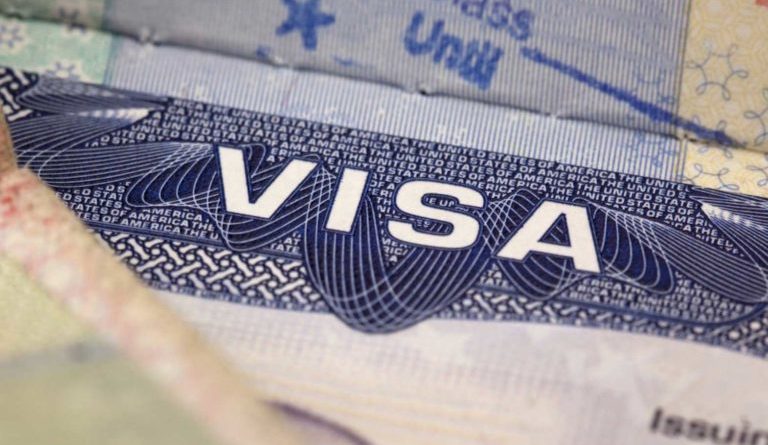INT’L VISAS | MIGRANT MATTERS- Visa Bulletin nailed to the cross
MIGRANT MATTERS
Both are not yet here (at the time of writing).
And both present a Calvary and Resurrection to immigrant visa applicants.
But not to every soul.
Only those waiting for their visas outside the United States.
.
In fact, even those in the US without legal status — such as those who have overstayed their stay — are more blessed than those patiently waiting in line, or stressfully opening their email notices from the National Visa Center (NVC).
Last month the USCIS issued changes to the Child Status Protection Act granting relief do applicants in the US by allowing them to use the dates on Chart B of the Visa Bulletin — Dates for Filing of Family Sponsored Applications — as the date by which an immigrant visa would be available, allowing those in the US to apply for adjustment of status.
The change does not benefit the hundreds of thousands of immigrant visa applicants waiting for their interview dates at consular posts worldwide.
The USCIS announcement evoked love for those in the US, but it is a heartbreaker for those waiting for their visa appointments.
An Easter bummer
Traditionally, Easter is celebrated on the first Sunday after the first full moon following the spring equinox. In 2018, Easter was celebrated on April 1. The next year, April 21. This year Easter Sunday falls on April 9.
The Visa Bulletin — published every month by the US State Department — shows the dates by which immigrant visa applicants may 1) either apply for their visas at specified consulates/embassies; or 2) start their visa processing with NVC.
For option 2 immigrant visa applicants (IVAs) must use the Chart 2 “Dates for Filing Family-Sponsored Visa Applications” of the Visa Bulletin.
.
Dates for filing family-sponsored
The accompanying table shows the dates for “filing visa applications within a time frame justifying immediate action in the application process.”
VISA BULLETIN APRIL 22 AND MARCH 2023

IVAs must check the “Filing Date” on the receipt notice issued by the US Citizenship and Immigration Services (USCIS). The filing date is the priority date. The USCIS receipt starts with the first three letters of the USCIS Service Center processing it: WAC for California, EAC for New York, LIN for Nebraska, SRC for Texas, and IOE for those filed online.
IVAs who have a priority date earlier than the application date in the chart may start assembling the required documents to establish continuing eligibility for the specific and submit required documents to the Department of State’s National Visa Center, following receipt of notification from the National Visa Center containing detailed instructions.
Upon receipt of the NVC instructions, an immigrant visa applicant may start obtaining the documents required for a specific preference category after paying the affidavit of support and visa fees for the principal applicant and derivative beneficiaries, if any — such as minor children.
Take note that from July 2021, the “Dates of Filing Family-sponsored Application” would have been favorable to an F1 immigrant — although not to an F2B visa applicant.
After remaining stagnant for seven months — January to July — the processing dates moved forward.
.
Continuing eligibility
John was petitioned by his lawful permanent resident (LPR) mother, Veronica, on April 30, 2012. His category at the time was F2B — over 21 unmarried son of an LPR. John has a live-in partner, Magdalene. They have two sons, Luke and Mark, ages 5 and 7, respectively.
Seven years earlier, to avoid the stigma of being teased or bullied as an illegitimate, out-of-wedlock child, John stated on Luke’s birth certificate that he was married to Magdalene when Luke was born on March 20, 2005 in Macabebe, Pampanga.
In July 2021, the “Date for Filing Family-sponsored Application” shows the F2B cut-off date for the Philippines as Oct, 1, 2013.
However, the cut-off date for the unmarried son of a US citizen in the F1 category was April 22, 2015. Just a month earlier, the F1 cut-off date was May 15, 2014.
John’s mother was super-elated. Veronica’s application for naturalization as a US citizen had been approved. She was subsequently sworn in and obtained her certificate of naturalization on Aug. 10,2021.
.
Veronica instructed John to start processing his visa application with NVC as an F1 applicant.
John did — after receiving the case creation letter from NVC with his case number and invoice ID number.
John proceeded with paying the affidavit of support fee, submitted the affidavit of support; started uploading the civil documents to establish his continuing eligibility for the appropriate preference category.
Legally, he could apply as an F1 visa applicant since the petitioner was now a US citizen. Or he could choose to opt out of the F1 conversion and remain as F2B visa beneficiary. Veronica must also inform NVC about her immigration status change to update John’s visa category.
The F1 is the better choice since the processing date indicates John may complete his visa processing. Once he has submitted all the civil documents required, he could be considered documentarily qualified and wait for his priority date to be current. Luke and Mark would be derivative beneficiaries.
Luke’s birth certificate, however, is the sword of a centurion that hangs over John’s head. It could become a reason for visa refusal.
In August 2021, John decided to re-register Luke’s birth, this time in Manila. When applying for late registration on Sept. 10, 2021, John indicated he was not married. As further proof that he was single, John obtained a Certificate of No Marriage from the Philippine Statistics Authority, a simple local civil registration move. Luke became an “illegitimate” son.
Meanwhile the cut-off date for the F1 visa category had been stuck at April 15, 2022 since July 2021.
If he submits Luke’s original birth certificate, his petition could be revoked because the original birth certificate shows that John was already married before the petitioner became a US citizen. The late-registered PSA-documented birth certificate states John is not married. But Luke’s birthplace was changed from the original town in Macabebe to Manila.
The late-registered birth certificate would be the correct one, insofar as his civil status and birth date are concerned. But the place of birth was indicated as Manila. Luke was born in Macabebe, Pampanga.
Should the consul check his record with PSA during the interview, the original birth certificate will have the correct date and place of birth, but the same birth certificate will show that Luke’s parents — John and Magdalene — were “married.”
He could be charged with falsification of public documents.
The late-registered date of birth could lead to an immigration violation under “willful misrepresentation of a material fact.”
Which of John’s two birth certificates should he upload to the NVC database?
John’s calvary becomes excruciating since the F1 processing date remained nailed to the cross of the immigrant visa backlog.
If he submits the document of less evil, he could be a victim of the Passover.
Passed over for visa issuance.
(To be continued next Monday, March 27, 2023)
 Ads by: Memento Maxima Digital Marketing
Ads by: Memento Maxima Digital Marketing
@[email protected]
SPACE RESERVE FOR ADVERTISTMENT



 Memento Maxima Digital Marketing
Memento Maxima Digital Marketing






